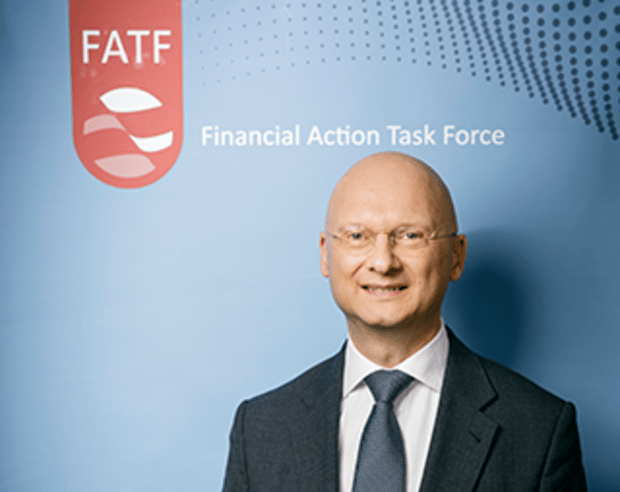Bitcoin was created to obliterate the type of control that the FATF seeks to enforce.
The below is a direct excerpt of Marty’s Bent Issue #1111: “Reminder: reject the Financial Action Task Force.” Sign up for the newsletter here.

Look at this stock image looking mother fucker and then look yourself in the mirror and try to convince yourself that you honestly believe that he is the ultimate financial crime stopper. The lord and savior of those subjected to the ills of money laundering.
Done laughing yet?
This is Marcus Pleyer, the President of the Financial Action Task force – an unelected bureaucratic entity created in 1989 and tasked with curbing financial crime for the countries who claim to be in the G7. He is the supposed man with the plan to prevent financial criminals from harming you. At least, that’s what FATF claims is their purpose and the raison d’etre that our bald headed friend Marcus has a job.
In reality, the FATF serves a much more nefarious purpose. They portend to exist to recommend “guidelines” to the G7 governments in accordance with what they deem to be the most necessary steps countries can take to mitigate the chances of their citizens being subjected to financial crimes. However, in practice, they exist to make life as hard as possible for any organization that wishes to provide financial services or utilities to individuals who live within G7 countries and associated corrupt governments. Their job is to ensure that the incumbent power players don’t face any serious competition while making life harder and harder and harder for an individual to operate within the economy while preserving their privacy and dignity. They are the Eye of Sauron in the real world as we know it today.
This morning I was asked by a journalist to provide a quick comment on the “crypto industry’s efforts to comply with the FATF’s travel rule”. A rule which requires financial institutions to collect and share intimate personal identifying information on any party involved on either side of a transaction being facilitated by a trusted financial institution, which “crypto” providers are beginning to be included in.
For today’s rag, I thought I’d share my response:
“The FATF is a supranational bureaucratic regulatory body that no one voted for and no one asked for, but for some reason they have an inordinate amount of influence on financial regulation across the world. Historically, governments have taken FATF’s Orwellian regulatory guidelines and implemented them with little push back. Slowly but surely decreasing the privacy of their constituents with stricter and stricter KYC/AML regulations that have proven to be wholly ineffective against preventing financial crimes. Jeffrey Epstein was able to maintain a large account with Deutsche Bank and launder hundreds of thousands of dollars after being released from prison for sexually abusing minors.
Motivated criminals are always going to find ways to commit their crimes. The burdensome data collection requirements that FATF thrusts upon financial institutions globally do nothing more than put innocent, law abiding individuals at risk of identity theft and physical harm as more and more entities are forced to collect and store (typically insecurely) their personal identifying information. There are hundreds of millions of people who have been subjected to this unnecessary risk.
Since it is blatantly obvious that these guidelines prove to be ineffective at preventing crime and have been since the onset of the Bank Secrecy Act, which spawned this type of expansive encroachment on civil liberties, one must come to the conclusion that the regulatory guidelines don’t really serve their stated purpose, but are used as a means of garnering more control over individuals and limiting freedoms in the Digital Age.
Anyone in the “crypto” industry who is eagerly attempting to comply with FATF guidelines should take a moment to employ some introspection and ask why they are here in the first place. Bitcoin was created to completely obliterate this type of demonic control. Those who tell themselves that they align with the mission of Bitcoin should reject FATF guidelines and engage in civil and corporate disobedience.
Enough is enough. No more bending the knee to tyranny.”
Are you ready to disobey these ineffective and deceptive tyrants? Your Uncle Marty sure is.
















